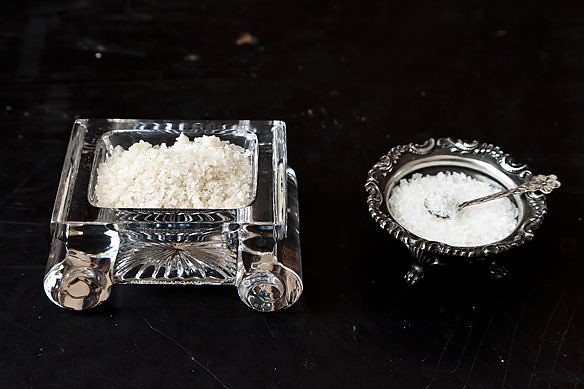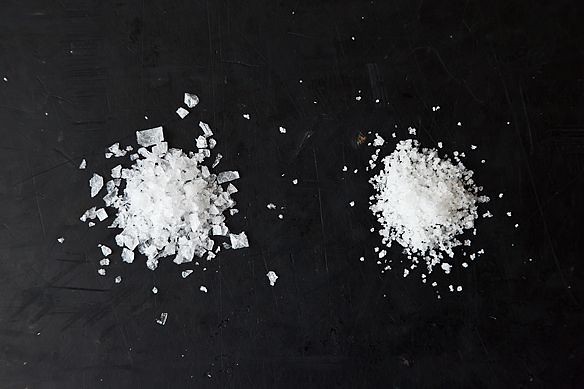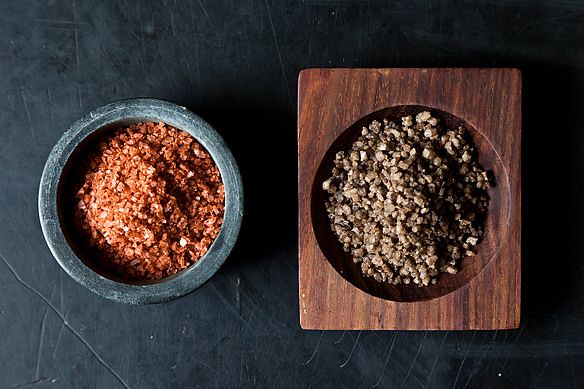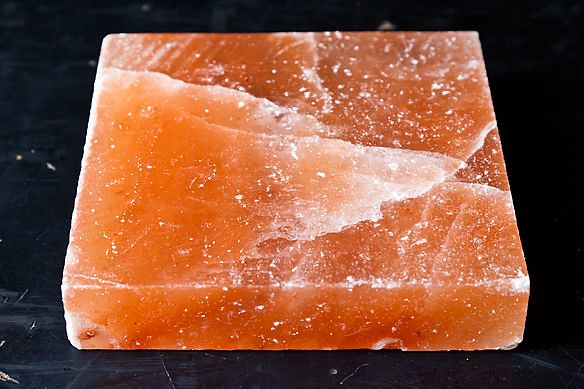Seems like we got an early start on the cold and flu season this year. A lot of people have already had the cold- endless runny nose and congestion and a few have had the flu, 24hour stomach flu seems to have hit the city. But a lot of people just can't tell the difference between a cold and flu, this handy chart printed out and placed on your fridge will help if you do start to feel poorly.
My goal is always prevention
Homeopathically you can take remedies to help prevent illness:
Oscillococcinum 200C taken at the 1st of every month (only 4 pellets under the tongue) and Influenzinum 200C taken at the 15th of the month (one pellet under the tongue) has been proven to reduce the incidence of any cold or flu. Start taking this November 1st and continue to take it until May15th. If you do become ill it's also shown to drastically reduce the duration and severity of infection from 14 days to about 4-5 days.
Watch your sugar intake!
Most rates of flu spike after periods on indulgence like Halloween, Christmas, Valentines Day and Easter. One can of regular cola can reduce your immune power 60% for up to 5hours, can you imagine how much your system is reduced after the sugar high of Halloween? But it's not just sugar – it's alcohol, your body processes alcohol like sugar. So limit these indulgences as well to improve your immune power.
Sugar is accumulative as well, take stock on how much you have in a day- one sugar cube is about 4g. The average morning cold cereal is about 12g, that's 3 cubes of sugar before your add the milk. Now add in: the sugar in your tea or coffee, in your yogurt, juice and cubes pop with your lunch and your afternoon trip to the vending machine or the coffee shop. You could be up to 36 sugar cubes before you know it. Way more than just a can of cola so imagine how much you immune power has diminished. (Whole fruits are better the fiber in the fruit slows down how fast you process the foods, juice is processed as sugar without the fiber.)
What are some
possible ingredients to be used in a Smoothie Recipe to Boost the Immune
System?
Fruits:
Fruits contain vitamins, antioxidants, and other nutritional ingredients that nourish the body, providing support for your immune system. Some favorite fruits are blueberries, strawberries, bananas and peaches.
Fruits contain vitamins, antioxidants, and other nutritional ingredients that nourish the body, providing support for your immune system. Some favorite fruits are blueberries, strawberries, bananas and peaches.
Wheat grass
Wheat grass is an energizer. The vitality obtained from wheat grass juice is remarkable. One ounce of wheat grass juice has the nutritional value of over 20 oz. of garden vegetables and may be sufficient for your daily maintenance and supply of minerals, vitamins, amino acids, and enzymes. The nutrients in wheat grass juice are easily digested and enter the bloodstream quickly.
Wheat grass is an energizer. The vitality obtained from wheat grass juice is remarkable. One ounce of wheat grass juice has the nutritional value of over 20 oz. of garden vegetables and may be sufficient for your daily maintenance and supply of minerals, vitamins, amino acids, and enzymes. The nutrients in wheat grass juice are easily digested and enter the bloodstream quickly.
Aloe Vera Juice
Clinical studies have shown that AVJ may have curative properties in the treatment of stomach ulcers and other digestive conditions. It is also often used to produce a mild laxative effect. Aloe Vera Juice is also an effective antioxidant that contains various essential nutrients like minerals, vitamins and enzymes, which help in strengthening the immune system.
Clinical studies have shown that AVJ may have curative properties in the treatment of stomach ulcers and other digestive conditions. It is also often used to produce a mild laxative effect. Aloe Vera Juice is also an effective antioxidant that contains various essential nutrients like minerals, vitamins and enzymes, which help in strengthening the immune system.
Echinacea
Echinacea has been popularly attributed with the ability to boost the body’s immune system. Despite the recent advent of antibiotics, Echinacea remains a popular herb for treating various illnesses like colds, flu, infections, and skin conditions.
Echinacea has been popularly attributed with the ability to boost the body’s immune system. Despite the recent advent of antibiotics, Echinacea remains a popular herb for treating various illnesses like colds, flu, infections, and skin conditions.
Green Tea
The green tea is a very powerful antioxidant, and is known to help the immune system fight viral and bacterial infections.
The green tea is a very powerful antioxidant, and is known to help the immune system fight viral and bacterial infections.
Bee Pollen
A fine, powder-like material produced by the anthers of flowering plants that is gathered by the bee. Bee pollen contains the B-complex vitamins, Vitamin C, amino acids enzymes, carotene calcium, copper, iron magnesium, and potassium. Although well known for its ability to fight fatigue and increase endurance.
A fine, powder-like material produced by the anthers of flowering plants that is gathered by the bee. Bee pollen contains the B-complex vitamins, Vitamin C, amino acids enzymes, carotene calcium, copper, iron magnesium, and potassium. Although well known for its ability to fight fatigue and increase endurance.
Ginseng
This Chinese herb, often used to combat fatigue and lack of energy, is a great addition to any smoothie to give it a boost. Ginseng contains a caffeine-like chemical that has been shown to enter the bloodstream rapidly. This may result in physiological effects such as a sense of increased energy and mental alertness and has been found to have a positive effect on athletic performance, reaction time and visual/motor coordination.
This Chinese herb, often used to combat fatigue and lack of energy, is a great addition to any smoothie to give it a boost. Ginseng contains a caffeine-like chemical that has been shown to enter the bloodstream rapidly. This may result in physiological effects such as a sense of increased energy and mental alertness and has been found to have a positive effect on athletic performance, reaction time and visual/motor coordination.
Protein Powders:
Soy (plant-based) protein, and/or Whey protein (animal based) contain high amounts of protein, minerals, and essential amino acids that help build the body. It is a great supplement to any healthy smoothie recipe.
Soy (plant-based) protein, and/or Whey protein (animal based) contain high amounts of protein, minerals, and essential amino acids that help build the body. It is a great supplement to any healthy smoothie recipe.
Wheat Germ
From the heart of the wheat kernel, wheat germ is packed with nutrients. In addition to the fact that it’s rich in vitamin B and E and selenium, wheat germ is high in protein and iron – two nutrients our bodies need for energy.
From the heart of the wheat kernel, wheat germ is packed with nutrients. In addition to the fact that it’s rich in vitamin B and E and selenium, wheat germ is high in protein and iron – two nutrients our bodies need for energy.
Oat Bran:
Nutritionally, oats are similar to whole wheat, and the main difference being that the oat kernel has not been taken apart, and the wheat kernel has. Oats, too, are high in protein and fiber, and are a good source of zinc, vitamins and iron. The fiber in oat bran is the soluble kind, which has been found to lower cholesterol.
Nutritionally, oats are similar to whole wheat, and the main difference being that the oat kernel has not been taken apart, and the wheat kernel has. Oats, too, are high in protein and fiber, and are a good source of zinc, vitamins and iron. The fiber in oat bran is the soluble kind, which has been found to lower cholesterol.
Immune Boosting Recipes
Roasted Butternut
Squash Soup
Ingredients
1 large butternut
squash (or 2 small)
1 Tbsp. Olive oil
2 yellow onions,
quartered
1 Tbsp. butter
2-3 cups no sodium
chicken stock
1/2 tsp. cinnamon
pinch ground nutmeg
pinch ground cloves
1/4 tsp. salt
1/4 tsp. black
pepper
Instructions
Cut butternut squash
lengthwise and remove seeds. Preheat oven to 425° F. Brush insides and of
squash halves and onion quarters with olive oil, season with salt and pepper
and place, cut sides down, on cookie sheet or in roasting pan. Bake for 30-45
minutes or until squash, onion is tender.
When squash is
cooked, remove from oven and spoon out the softened squash into the saucepan
with the butter and onion, discarding the squash skin. Add enough chicken stock
to the saucepan to cover the squash by about an inch. Return to heat and bring
to a boil. Reduce heat and simmer for about 20 minutes. Add spices.
If soup is lumpy at
this point and you prefer it perfectly smooth, puree with an immersion blender
or a bit at a time in a regular blender.
Number of servings (yield): 6
Maple-Walnut
Tapioca Pudding
Turn
comforting tapioca pudding into a special dessert for two by spiking it with
pure maple syrup and finishing it with a simple spiced maple-nut topping.
Ingredients
1
cup low-fat milk
1
large egg, well beaten
1
tablespoon plus 1 teaspoon quick-cooking tapioca
1/8
teaspoon salt
1/4
cup plus 1 tablespoon pure maple syrup, divided
1/2
teaspoon vanilla extract
2
tablespoons chopped walnuts
Pinch
of ground cinnamon
Pinch
of ground nutmeg
Instructions
Combine milk, egg,
tapioca and salt in a medium saucepan. Let stand for 5 minutes.
Place the saucepan
over medium-low heat and cook, stirring constantly, until the mixture comes to
a boil, 6 to 18 minutes (depending on your stove). Remove from the heat; stir
in 1/4 cup syrup and vanilla.
Divide the pudding
between 2 ramekins or custard cups. Let cool for at least 30 minutes or
refrigerate until chilled.
Meanwhile, line a
small plate with parchment or wax paper. Coat the paper with cooking spray.
Combine walnuts, the remaining 1 tablespoon syrup, cinnamon and nutmeg in a
small saucepan or skillet. Heat over medium-low heat, stirring, until most of
the syrup has evaporated, 1 to 4 minutes. Spread the nuts out onto the prepared
paper and place in the freezer until cool, about 10 minutes.
Crumble the chilled
walnut topping into pieces. Serve the pudding topped with the maple walnuts.
Sesame-Honey
Tempeh & Quinoa Bowl
Here
we toss tempeh with a honey-sesame sauce and serve it over quinoa and shredded
carrots for a satisfying vegetarian meal. Serve with sesame breadsticks.
Ingredients
Quinoa
& Carrot Slaw
1
1/2 cups water
3/4
cup quinoa, rinsed
2
cups grated carrots (about 3 large)
2
tablespoons rice vinegar
2
tablespoons sesame seeds, toasted (see Tip)
1
tablespoon sesame oil
1
tablespoon reduced-sodium soy sauce
Sesame-Honey
Tempeh
2
tablespoons sesame oil
2
8-ounce packages tempeh (see Note), crumbled into bite-size pieces
3
tablespoons honey
3
tablespoons reduced-sodium soy sauce
2
tablespoons water
1
teaspoon cornstarch
2
scallions, sliced
Instructions
To prepare quinoa:
Bring 1 1/2 cups water to a boil in a small saucepan. Add quinoa and return to
a boil. Reduce to a low simmer, cover and cook until the water is absorbed, 10
to 14 minutes. Uncover and let stand.
To prepare carrot
slaw: Meanwhile, combine carrots, rice vinegar, sesame seeds, 1 tablespoon oil
and 1 tablespoon soy sauce in a medium bowl. Set aside.
To prepare tempeh:
Heat 2 tablespoons oil in a large nonstick skillet over medium heat. Add tempeh
and cook, stirring frequently, until beginning to brown, 7 to 9 minutes.
Combine honey, 3
tablespoons soy sauce, 2 tablespoons water and cornstarch in a small bowl. Add
to the pan and cook, stirring, until the sauce has thickened and coats the
tempeh, about 1 minute.
Divide the quinoa among 4 bowls and top each
with 1/2 cup carrot slaw and 3/4 cup tempeh mixture. Sprinkle with scallions.
Autumn Greens Salad with Sunflower Seeds
Ingredients
1/3 cup raw sunflower
seeds
1 tbsp whole-grain
mustard
3 tbsp s fresh lemon
juice (1 large lemon)
3/4 tsp coarse salt
1 tbsp plus 1 tsp pure
maple syrup
2 tbsp organic sunflower
oil, preferably cold-pressed
1/2 pound brussels
sprouts, very thinly sliced (3 cups)
4 to 6 leaves of leafy
greens such as Swiss chard and kale (preferably lacinato),
stemmed and thinly sliced (3 cups)
stemmed and thinly sliced (3 cups)
Instructions
Preheat oven to 375
degrees. Toast sunflower seeds on a rimmed baking sheet in a single layer until
golden, stirring occasionally, about 10 minutes. Set aside to cool. Meanwhile,
stir mustard, lemon juice, salt, and maple syrup together in a small bowl;
whisk in oil until emulsified.
Toss brussels sprouts, chard, and kale together.
Stir in sunflower seeds and pour in dressing; toss to coat. Serve immediately.
Roasted-Garlic Soup
Ingredients
2 garlic bulbs, cloves
separated (about 40), plus 2 cloves, thinly sliced
1 large russet potato
(about 12 ounces), peeled and cut into 1/2-inch cubes
1 large yellow onion
(about 12 ounces), trimmed, peeled, and cut into six-inch wedges
4 fresh sage leaves
1 tbsp extra-virgin
olive oil, plus 1 1/2 tsp
1 1/2 tsp coarse salt
Freshly ground pepper
1/3 cup good quality dry
sherry
3 1/2 cups homemade or
low-sodium store-bought chicken stock
1 tsp fresh lemon juice
snipped fresh chives,
for garnish
Instructions
Preheat oven to 400. Toss whole garlic cloves,
potato, onion, sage, 1 tbsp oil, 1 tsp salt, and a pinch of pepper in a large
ovenproof skillet. Cover, and transfer to oven. Roast, stirring occasionally, 30
minutes.
Meanwhile, make the garnish: Put remaining 1 1/2 tsp
oil and the sliced garlic into a small skillet. Cook over low heat, swirling
skillet occasionally, until garlic is browned but not burned, about 20 minutes.
Using a slotted spoon, transfer garlic slices to paper towels to drain.
Remove skillet from oven, and stir in 1/3 cup
water. Cover, and return to oven; roast until potato is deep golden brown and
garlic and onion are very soft, about 20 minutes. Transfer garlic cloves to a
plate, and let cool slightly. Squeeze garlic from skins into skillet; discard
skins.
Heat skillet over medium-high heat. Add sherry, and
cook, stirring to scrape up browned bits, 1 minute. Add stock and 1/2 cup
water, and bring to a simmer. Remove from heat, and let cool slightly.
Puree vegetable mixture in a blender in batches.
Press through a fine sieve into a medium saucepan. Heat over low heat; stir in
lemon juice, remaining 1/2 tsp salt, and 1/4 tsp pepper.







